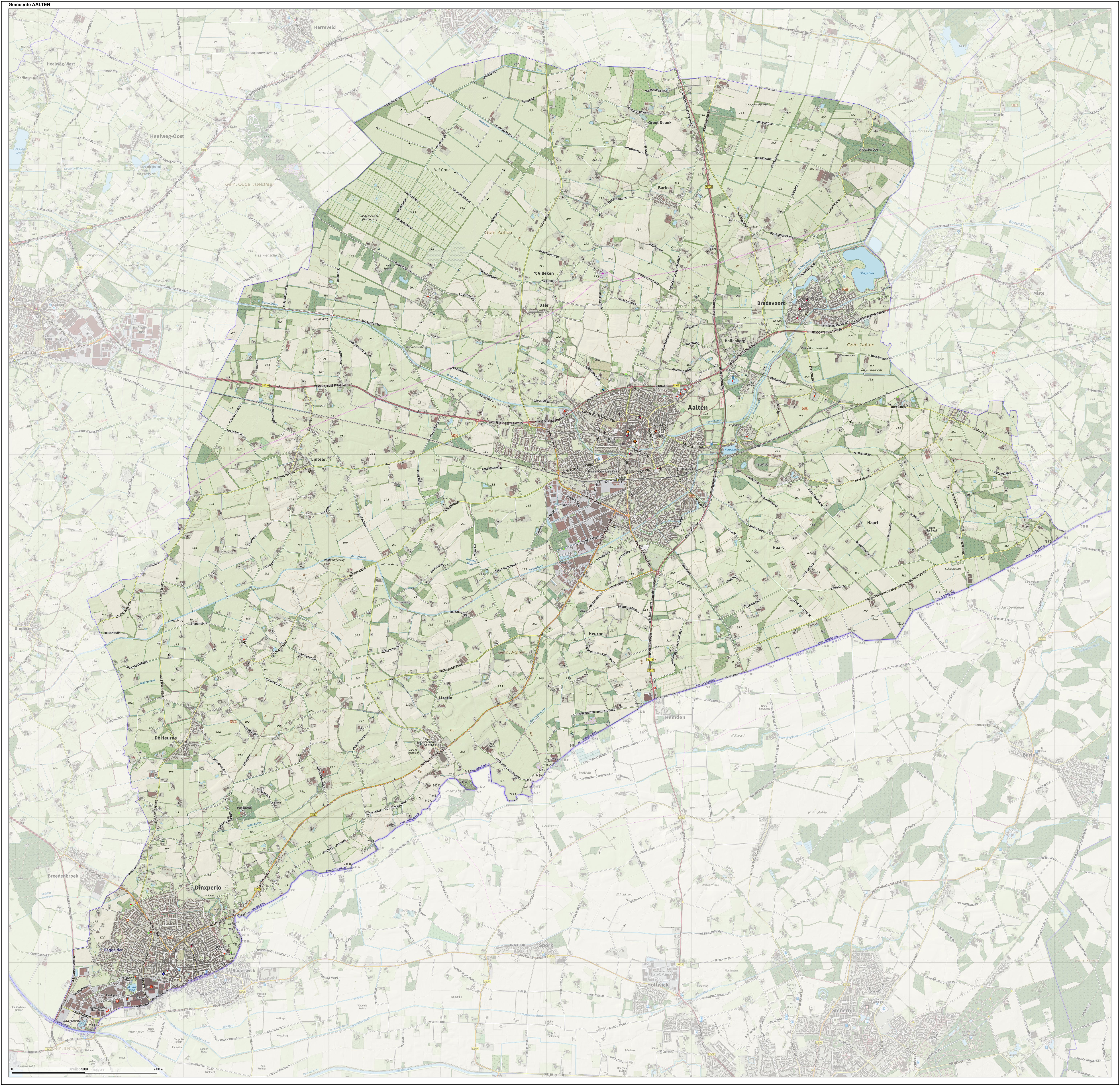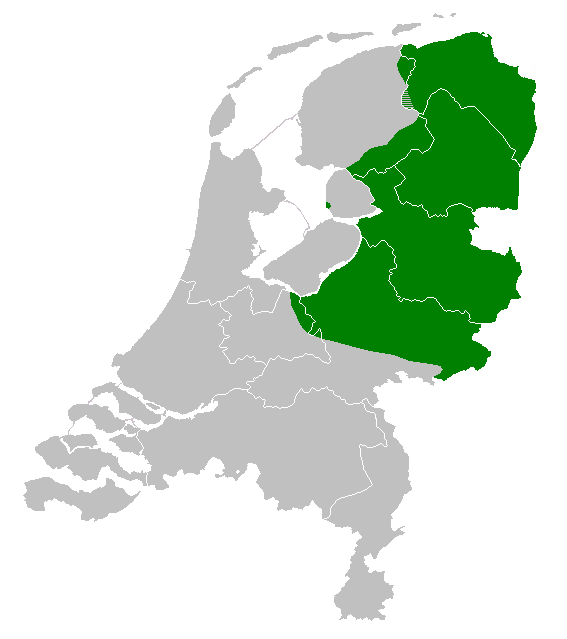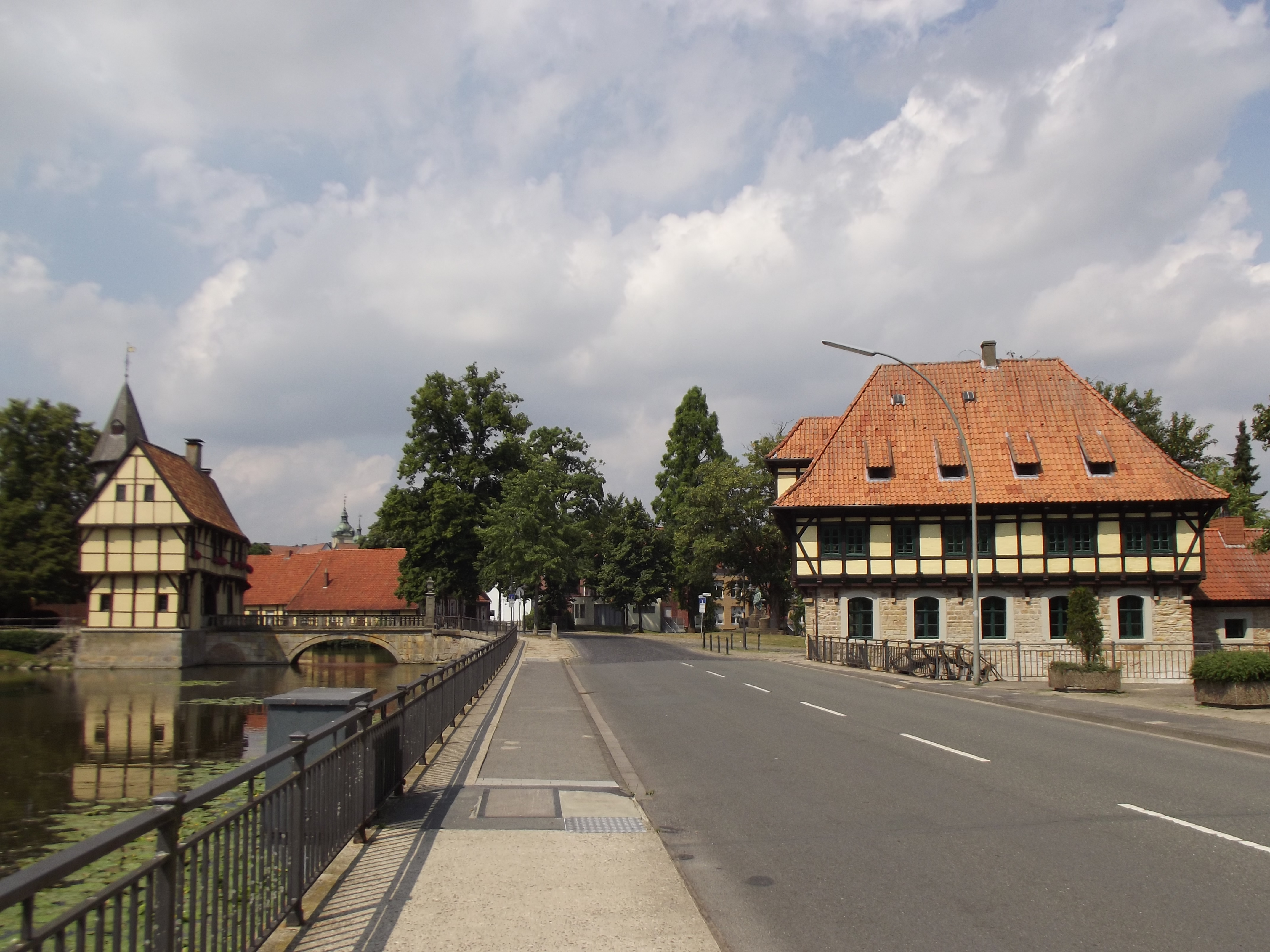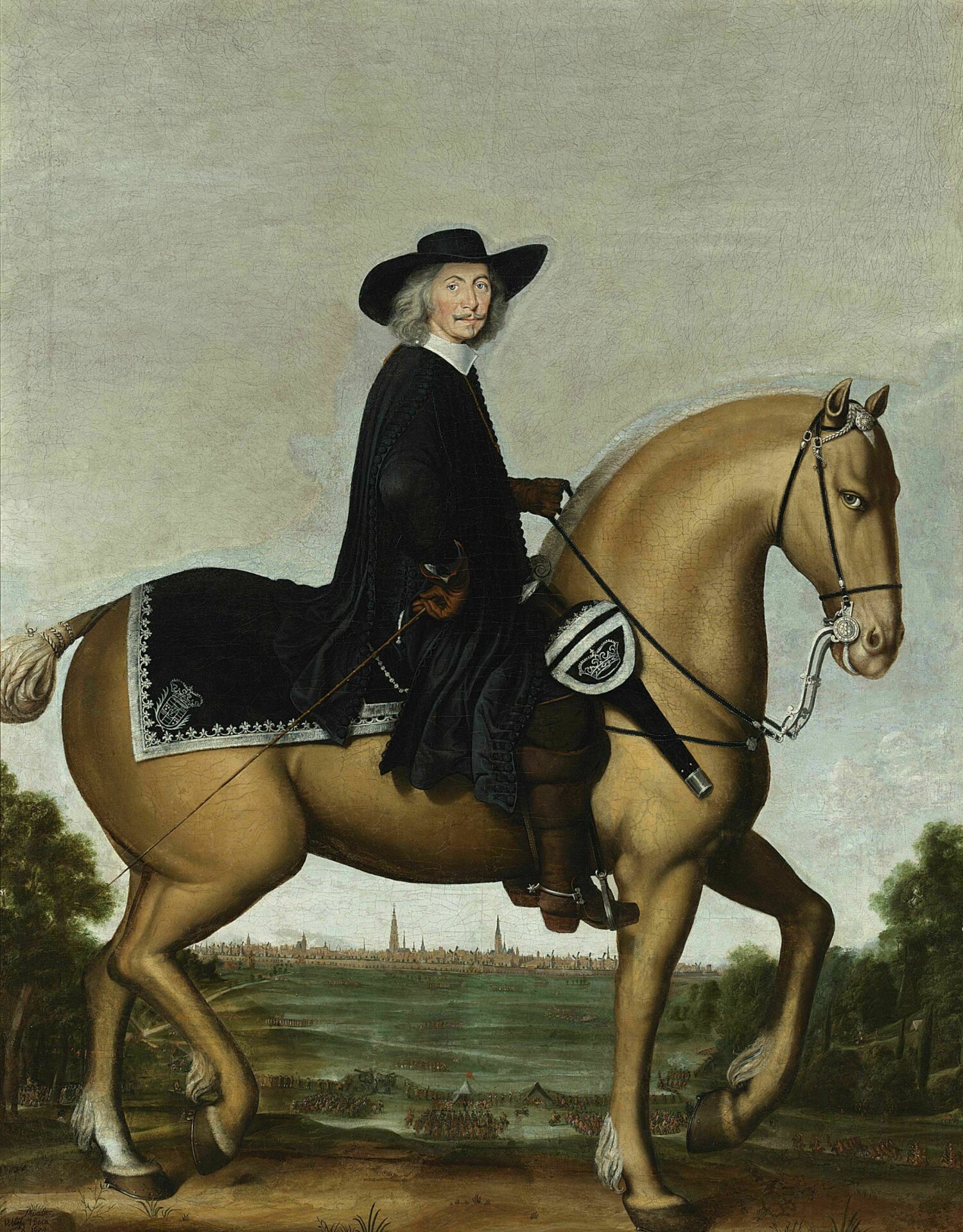|
Bredevoort
Bredevoort ( Low Saxon: ) is a small city with city privileges of about 1600 inhabitants in the municipality of Aalten, Netherlands. It is between the towns of Aalten and Winterswijk. Bredevoort has presented itself as ''Bredevoort boekenstad'' (''Bredevoort book town''), after the examples of Hay-on-Wye in Wales and Redu in Belgium. There are now more than 20 second-hand book shops in the town. Bredevoort was a '' Heerlijkheid'' and a separate municipality until 1818. The villages Aalten, Dinxperlo and Winterswijk included the fiefdom of Bredevoort when it became a part of Aalten in 1818. History The name Bredevoort appears for the first time on a list of properties belonging to the archbishop of Cologne in 1188, who owned shares of the castle Bredevoort. When the count of Steinfurt tried to sell his share of the castle to the bishop of Munster and the count of Loon tried to sell his share to the count of Gelderland, a conflict broke out between the bishop and the count of ... [...More Info...] [...Related Items...] OR: [Wikipedia] [Google] [Baidu] |
Siege Of Bredevoort (1597)
The siege of Bredevoort in 1597 was a siege of Bredevoort by the military forces led by Maurice of Nassau, Prince of Orange, during the Eighty Years War and the Anglo-Spanish War. The siege lasted from 1 October until 9 October; after that day Bredevoort was occupied by the besiegers. The siege was part of a campaign during which Maurice conquered the cities Turnhout, Alphen, Rijnberk, Meurs, Bredevoort, Groenlo, Goor, Enschede, Oldenzaal, Ootmarsum, and Lingen. Events Bredevoort was defended by only two companies of soldiers (200), led by a French captain Damien Gardot and his lieutenant ''Van Broeckhuysen'', as Count Hendrik van den Bergh and his supporting troops were absent. Bredevoort was considered impregnable, the city was surrounded by swamps which made it very difficult to get guns within shooting range. Maurice was advancing towards the city with 6,000 troops and 1,200 cavalry which included 13 companies of English troops under Horace Vere. To tackle the swamps ... [...More Info...] [...Related Items...] OR: [Wikipedia] [Google] [Baidu] |
Castle Of Bredevoort
The Bredevoort Castle ( nl, Kasteel Bredevoort) was a castle in the city of Bredevoort, Guelders in the Netherlands. History The earliest known mention of the castle dates from 1188 as "castrum Breidervort". On the forecourt of the castle developed a small city during the time. In 1646 the Powder Tower of the castle was struck by lightning. The explosion did hit the castle and city which was badly damaged. The castle was a ruin. ''Lord Haersolte'' and his family were all killed by the explosion. Only one son, ''Anthonie'', survived the disaster. He was not at home during the disaster.H.A. Hauer: in Breevoort can ick vergeten niet Uitgever: De Graafschap, 1956 In April 2009 there were found heavy wall remnants on the site during excavations. Some parts of the Curtain wall of the castle are made visible by brass Brass is an alloy of copper (Cu) and zinc (Zn), in proportions which can be varied to achieve different mechanical, electrical, and chemical properties. It is a ... [...More Info...] [...Related Items...] OR: [Wikipedia] [Google] [Baidu] |
Maurice Of Nassau, Prince Of Orange
Maurice of Orange ( nl, Maurits van Oranje; 14 November 1567 – 23 April 1625) was ''stadtholder'' of all the provinces of the Dutch Republic except for Friesland from 1585 at the earliest until his death in 1625. Before he became Prince of Orange upon the death of his eldest half-brother Philip William in 1618, he was known as Maurice of Nassau. Maurice spent his youth in Dillenburg in Nassau, and studied in Heidelberg and Leiden. He succeeded his father William the Silent as stadtholder of Holland and Zeeland in 1585, and became stadtholder of Utrecht, Guelders and Overijssel in 1590, and of Groningen in 1620. As Captain-General and Admiral of the Union, Maurice organized the Dutch rebellion against Spain into a coherent, successful revolt and won fame as a military strategist. Under his leadership and in cooperation with the Land's Advocate of Holland Johan van Oldenbarnevelt, the Dutch States Army achieved many victories and drove the Spaniards out of the north and ea ... [...More Info...] [...Related Items...] OR: [Wikipedia] [Google] [Baidu] |
Aalten
Aalten () is a municipality and a town in the eastern Netherlands. The former municipalities of Bredevoort (1818) and Dinxperlo (2005) have been merged with Aalten. Notable inhabitants of Aalten include Angus Young, guitarist of the Australian rock band AC/DC, and Robert Gesink, a professional road bicycle racer. During World War II, 51 of Aalten's 85 Jews were hidden by local non-Jews, and thereby survived the war. According to the War and Resistance Museum in Aalten, the village had the highest number of people in hiding during World War II. The village of approximately 13,000 residents hid some 2,500 people.http://www.marline.nl/verzet.html 'Marline: de infozine v/d Achterhoek' Population centres Transportation Aalten railway station serves Aalten and the surrounding area. There is a half-hourly service between Arnhem and Winterswijk, which stops at this station. Arnhem railway station has services to Amsterdam, Amsterdam Airport, Utrecht, Nijmegen, 's-Hertogenbosch, ... [...More Info...] [...Related Items...] OR: [Wikipedia] [Google] [Baidu] |
House Of Orange-Nassau
The House of Orange-Nassau ( Dutch: ''Huis van Oranje-Nassau'', ) is the current reigning house of the Netherlands. A branch of the European House of Nassau, the house has played a central role in the politics and government of the Netherlands and Europe especially since William the Silent organised the Dutch Revolt against Spanish rule, which after the Eighty Years' War (1568–1648) led to an independent Dutch state. Several members of the house served during this war and after as stadtholder ("governor"; Dutch: ''stadhouder'') during the Dutch Republic. However, in 1815, after a long period as a republic, the Netherlands became a monarchy under the House of Orange-Nassau. The dynasty was established as a result of the marriage of Henry III of Nassau-Breda from Germany and Claudia of Châlon-Orange from French Burgundy in 1515. Their son René of Chalon inherited in 1530 the independent and sovereign Principality of Orange from his mother's brother, Philibert of Ch� ... [...More Info...] [...Related Items...] OR: [Wikipedia] [Google] [Baidu] |
Book Town
A book town is a town or village with many used book or antiquarian bookstores. These stores, as well as literary festivals, attract bibliophile tourists. Some book towns are members of the International Organisation of Book Towns. List of book towns Book towns with known dates of operation * Kaifeng, China (17th century) * Jinbōchō, Japan (early 1880s) * Hay-on-Wye, Wales (1961) * Redu, Belgium (1984) * Bécherel, France (1988) * Montolieu, France (1989) * Bredevoort, Netherlands (1993) * Saint-Pierre-de-Clages, Switzerland (1993) * Fontenoy-la-Joûte, France (1993) * Mundal, Norway (1995) * Wigtown, Scotland (1997) * Zossen-Wünsdorf, Germany (1997) * Damme, Belgium (1997) * Dalmellington, Scotland (1997, though the last bookseller closed in 2005 and the project has folded.) * Sysmä, Finland (4 July 1997) * Mühlbeck- Friedersdorf, Germany (1997) * Kampung Buku Langkawi, Malaysia (3 December 1997) * Archer City, U.S. (1999) * Montmorillon, France (2000) * Southern ... [...More Info...] [...Related Items...] OR: [Wikipedia] [Google] [Baidu] |
Heerlijkheid
A ''heerlijkheid'' (a Dutch word; pl. ''heerlijkheden''; also called ''heerschap''; Latin: ''Dominium'') was a landed estate that served as the lowest administrative and judicial unit in rural areas in the Dutch-speaking Low Countries before 1800. It originated as a unit of lordship under the feudal system during the Middle Ages. The English equivalents are '' manor'', '' seigniory'' and '' lordship''.. The translation used by J.L. Price in ''Dutch Society 1588-1713'' is "manor"; by David Nicholas in ''Medieval Flanders'' is "seigneury". The German equivalent is '' Herrschaft''. The ''heerlijkheid'' system was the Dutch version of manorialism that prevailed in the Low Countries and was the precursor to the modern municipality system in the Netherlands and Flemish Belgium. Characteristics and types A typical ''heerlijkheid'' manor consisted of a village and the surrounding lands extending out for a kilometre or so. Taking 18th-century Wassenaar as an example of a large ''hoge h ... [...More Info...] [...Related Items...] OR: [Wikipedia] [Google] [Baidu] |
West Low German
Low Saxon, also known as West Low German ( nds, Nedersassisch, Nedersaksies; nl, Nedersaksisch) are a group of Low German dialects spoken in parts of the Netherlands, northwestern Germany and southern Denmark (in North Schleswig by parts of the German-speaking minority). It is one of two groups of mutually intelligible dialects, the other being East Low German dialects. A 2005 study found that there were approximately 1.8 million "daily speakers" of Low Saxon in the Netherlands. 53% spoke Low Saxon or Low Saxon and Dutch at home and 71% could speak it. loemhoff, H. (2005). Taaltelling Nedersaksisch. Een enquête naar het gebruik en de beheersing van het Nedersaksisch in Nederland. Groningen: Sasland./ref> According to another study the percentage of speakers among parents dropped from 34% in 1995 to 15% in 2011. The percentage of speakers among their children dropped from 8% to 2% in the same period. Extent The language area comprises the North German states of Lower Saxony, ... [...More Info...] [...Related Items...] OR: [Wikipedia] [Google] [Baidu] |
Steinfurt
Steinfurt (; Westphalian: ''Stemmert'') is a city in North Rhine-Westphalia, Germany. It is the capital of the district of Steinfurt. From roughly 1100-1806, it was the capital of the County of Steinfurt. Geography Steinfurt is situated north-west of Münster, North Rhine-Westphalia. Its name came into being in 1975 when the two hitherto independent towns Borghorst and Burgsteinfurt amalgamated. Borghorst became a prosperous city due to its flourishing textile industry, whereas Burgsteinfurt has always rather been coined by culture and administration. Tourists of the 19th century passing Burgsteinfurt praised the city as the "Paradise of Westphalia" and "Royal Diamond" (''Königsdiamant'') because of its 75 monumental buildings and moated castle. Neighbouring municipalities Steinfurt borders Ochtrup, Wettringen, Neuenkirchen, Emsdetten, Nordwalde, Altenberge, Laer, Horstmar and Metelen. City division Steinfurt consists of ''Borghorst'' and ''Burgsteinfurt'', each with t ... [...More Info...] [...Related Items...] OR: [Wikipedia] [Google] [Baidu] |
William III Of England
William III (William Henry; ; 4 November 16508 March 1702), also widely known as William of Orange, was the sovereign Prince of Orange from birth, Stadtholder of Holland, Zeeland, Utrecht, Guelders, and Overijssel in the Dutch Republic from the 1670s, and King of England, Ireland, and Scotland from 1689 until his death in 1702. As King of Scotland, he is known as William II. He is sometimes informally known as "King Billy" in Ireland and Scotland. His victory at the Battle of the Boyne in 1690 is commemorated by Unionists, who display orange colours in his honour. He ruled Britain alongside his wife and cousin, Queen Mary II, and popular histories usually refer to their reign as that of "William and Mary". William was the only child of William II, Prince of Orange, and Mary, Princess Royal, the daughter of King Charles I of England, Scotland, and Ireland. His father died a week before his birth, making William III the prince of Orange from birth. In 1677, he marrie ... [...More Info...] [...Related Items...] OR: [Wikipedia] [Google] [Baidu] |
Bernhard Von Galen
Christoph Bernhard Freiherr von Galen (12 October 1606, Drensteinfurt – 19 September 1678) was Prince-bishop of Münster. He was born into a noble Westphalian family. Background, education and conversion to Roman Catholicism Christoph Bernhard von Galen was born on 12 October 1606 to Lutheran parents of the aristocratic von Galen family. His father, Dietrich von Galen, had estates in the Baltic region and bore the title of Marshal of Courland. During a state assembly in Münster, Dietrich von Galen killed the Münster hereditary marshal, Gerd Morrien zu Nordkirchen, on 15 February 1607, and consequently had to spend twelve years in detention at Bevergern Castle. Because his wife accompanied him voluntarily, in 1616 the young Christoph Bernhard was placed under the care of his uncle, the Canon of Münster, Heinrich von Galen. He gave him a Catholic education by Jesuits at the Paulinum in Münster. In 1619, at 13, he took his first job working for the cathedral chapter in M� ... [...More Info...] [...Related Items...] OR: [Wikipedia] [Google] [Baidu] |
Gunpowder
Gunpowder, also commonly known as black powder to distinguish it from modern smokeless powder, is the earliest known chemical explosive. It consists of a mixture of sulfur, carbon (in the form of charcoal) and potassium nitrate (saltpeter). The sulfur and carbon act as fuels while the saltpeter is an oxidizer. Gunpowder has been widely used as a propellant in firearms, artillery, rocketry, and pyrotechnics, including use as a blasting agent for explosives in quarrying, mining, building pipelines and road building. Gunpowder is classified as a low explosive because of its relatively slow decomposition rate and consequently low brisance. Low explosives deflagrate (i.e., burn at subsonic speeds), whereas high explosives detonate, producing a supersonic shockwave. Ignition of gunpowder packed behind a projectile generates enough pressure to force the shot from the muzzle at high speed, but usually not enough force to rupture the gun barrel. It thus makes a good propellant but is ... [...More Info...] [...Related Items...] OR: [Wikipedia] [Google] [Baidu] |






